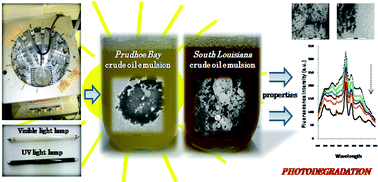
The effects of visible and UV light on the characteristics and properties of Prudhoe Bay (PB) and South Louisiana (SL) emulsions were investigated to better understand the role of sunlight on the fate of spilled crude oils that form emulsions with a dispersant in the aquatic environment. The unique changes in physico-chemical properties of these emulsions as a result of photodegradation were investigated.
“Photodegradation of crude oil components can be an effective process for mitigating some of the damaging impacts resulting from oil spills in the aquatic environment,” the authors write. With the availability of modern, efficient UV-visible light sources, the process “may enable economic application of photodetoxification on a large-scale basis,” they say.
Interested in knowing more? Read the article for free until March 20th.
Effects of visible and UV light on the characteristics and properties of crude oil-in-water (O/W) emulsions
Homer C. Genuino, Dayton T. Horvath, Cecil K. King’ondu, George E. Hoag, John B. Collins and Steven L. Suib
Photochem. Photobiol. Sci., 2012, Advance Article, DOI: 10.1039/C2PP05275J










